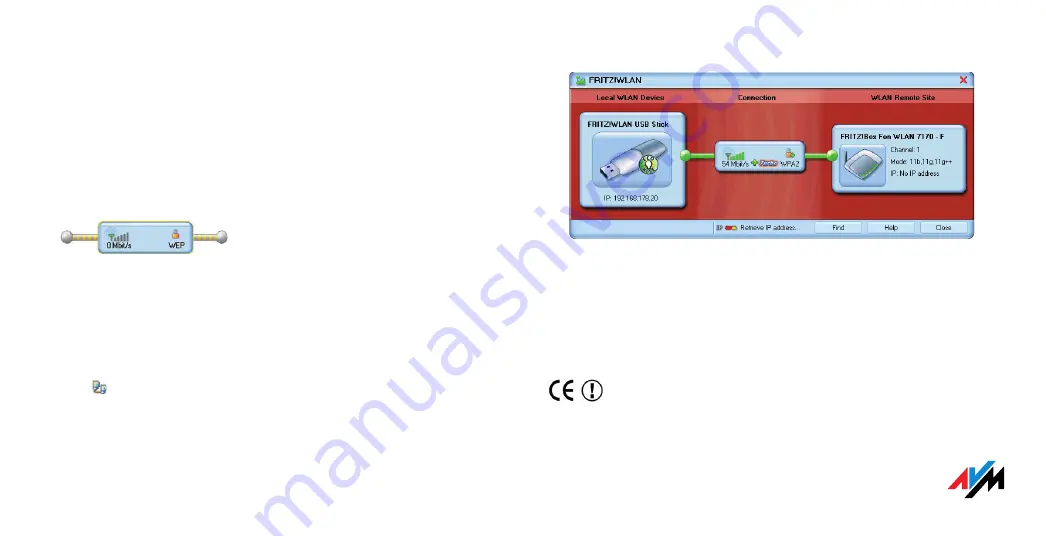
Direct Connections with Other WLAN Users
With a direct connection WLAN users can build a network quickly and directly (ad hoc) to
exchange data without an access point. An ad-hoc network of this nature is created by one
WLAN user; all other WLAN users can register at this network.
How to Create an Ad-hoc Network
1. Click the FRITZ!WLAN icon in the notifi cation area of the taskbar and select the menu
command “Create New Ad-hoc Network...”. The “Ad-hoc Network” window opens.
2. Assign a WLAN key.
3. Confi rm your settings by clicking “OK”.
Yellow waves in the FRITZ!WLAN control software indicate
that the ad-hoc network is ready.
4. Now an ad-hoc network with the network name “ad hoc” has been created.
How to Join an Ad-hoc Network
1. Click the FRITZ!WLAN icon in the notifi cation area of the taskbar and select the menu
command “Find”.
The “Find and Select WLAN Devices” dialog opens.
2. FRITZ!WLAN searches for WLAN devices at your location. An ad-hoc network is displayed
by the icon.
3. Select the ad-hoc network and click “Select”. The “Ad-hoc Network” window opens.
4. Enter the shared WLAN key and confi rm it with “OK”.
5. The ad-hoc network is displayed in the FRITZ!WLAN control software as a known device
and the WLAN connection is established.
FRITZ!WLAN control software: ad-hoc network
6. Use the Microsoft “Network” icon to access the network sharing enabled on the con-
nected computer.
Declaration of CE Conformity
The FRITZ!WLAN USB Stick satisfi es the requirements of the EU directive 1999/5/EC (R&TTE Directive:
Radio Equipment and Telecommunications Terminal Equipment). The CE symbol confi rms that the
FRITZ!WLAN USB Stick conforms with the above mentioned regulation.
The detailed declaration of CE conformity is available in the manual (PDF) fi le in the “INFO”
folder on the FRITZ!WLAN USB Stick CD included with delivery.
Indication of Countries
The FRITZ!WLAN USB Stick is designed for use in all countries of the European Union and in Switzerland,
Norway and Iceland. In France only indoor operation is permitted.
© AVM GmbH 2007 – 2009. All rights reserved.
Documentation release 11/2009






